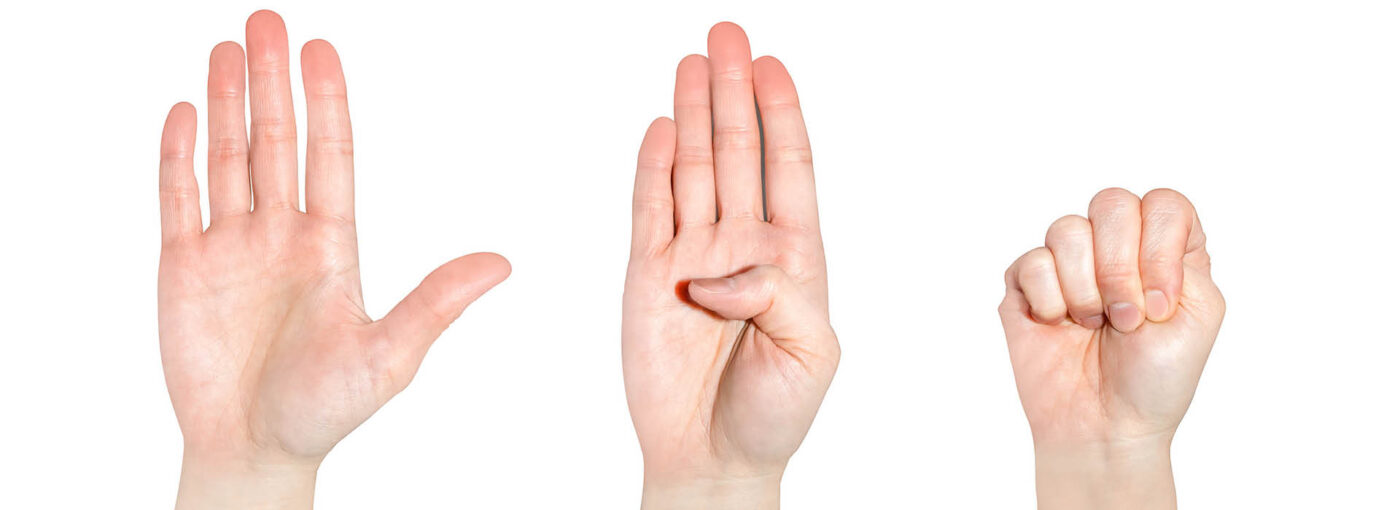People with disabilities are more likely to be targeted for exploitation in human trafficking schemes than those without disabilities. Vocational rehabilitation professionals, as experts in disability and with the potential to develop trusting relationships with members of this vulnerable population, are in a unique position to identify potential trafficking situations.
Traffickers deliberately target victims they think they will be able to isolate and control. As a result of pervasive stigma and stereotypes surrounding individuals with disabilities, traffickers focus on individuals with disabilities as targets in this crime. (National Human Trafficking & Disabilities Working Group)
Continue reading to gain a better understanding of human trafficking and people with disabilities. You will learn who is most vulnerable to trafficking, the warning signs, how to screen for it, and get resources for reporting and continued learning.
What is Human Trafficking?
Human Trafficking involves exploiting a person to provide labor or services, or to engage in commercial sex. The Trafficking Victims Protection Act of 2000 and its subsequent reauthorizations recognize and define two primary forms of human trafficking:
- Sex trafficking is the recruitment, harboring, transportation, provision, obtaining, patronizing, or soliciting of a person for the purpose of a commercial sex act in which a commercial sex act is induced by force, fraud, or coercion, or in which the person induced to perform such act has not attained 18 years of age. (22 U.S.C. § 7102(11)(A)).
- Forced labor is the recruitment, harboring, transportation, provision, or obtaining of a person for labor or services, through the use of force, fraud, or coercion for the purpose of subjection to involuntary servitude, peonage, debt bondage, or slavery. (22 U.S.C. § 7102(11)(B)).
How Does Trafficking Happen?
Trafficking happens when a vulnerable person is targeted by a trafficker with promises of friendship, love, employment, or stability, and is then forced to work and live in dire circumstances with little to no pay and slim chances of escape without support. There is no single profile of a trafficker; it could be anyone in a position of power or whom the person knows and trusts. Traffickers’ exploitation methods could be very subtle or blatant, and involve physical force or psychological manipulation. (U.S. Department of Justice)
Survivors of trafficking are often recruited and trafficked in their own communities and even in their own homes. It is a myth that human trafficking must involve illegal border crossings. (National Human Trafficking Hotline)
Who is Most Vulnerable to Trafficking?
Human traffickers often target members of marginalized communities. They most often prey on people whose vulnerabilities are worsened by lack of stable, safe housing, and who have limited economic and educational opportunities. (U.S. Department of Justice)
Traffickers may target people with disabilities for access to cash benefits, such as Supplemental Security Income (SSI) or Social Security Disability Insurance (SSDI) benefits, or for forced labor or prostitution. People especially vulnerable to human trafficking are those who have intellectual and developmental disabilities, are deaf or hard of hearing, or have physical disabilities or mental illness. (National Human Trafficking & Disabilities Working Group)
The Office for Victims of Crime Training and Technical Assistance Center details the vulnerabilities that increase the risk for individuals with disabilities of being trafficked:
- Dependence on a caregiver(s) to meet basic needs. Due to their dependence on a caregiver(s), a person may be socialized to comply with a caregiver’s wishes and have normalized an unequal power dynamic in their relationships. This dynamic could carry over into a relationship with a trafficker or abuser.
- Difficulties with communication and/or speech. Limited communication skills may affect a person’s ability to get help and report abuse. They may depend on their trafficker for interpretation.
- Cognitive limitations. A person with limited cognitive abilities may not know their phone number and address, and may not be able to think of options for escape.
- Desensitization to touch. A person may become desensitized to appropriate touch due to isolation, a lack of informed sex education, or medical procedures related to a disability.
- Unaware of the right to object or say no. Not understanding that each person has a right to bodily autonomy can diminish a person’s ability to protect themselves. They may not know they can object or reject unwanted touching or may be unsure of what constitutes a crime and what their rights are as a victim of a crime.
- Isolation and limited social experience. Isolation and limited social experience could result in a craving for relationships, making a person vulnerable to exploitation. A socially isolated or sheltered person may not be able to detect who is safe or unsafe to be around.
- Social powerlessness. Because of the social discrimination and prejudice people with disabilities face, authorities and even their own family and friends may not believe victims when they report their abuse. This is especially true for victims with disabilities that affect intellectual, cognitive, or communication functions or those individuals with mental health diagnoses.
Signs of Human Trafficking
Watch for these signs that indicate a person with a disability could be a victim of human trafficking:
- Unnecessary or unusual security/accompaniment
- Lack of freedom: person not allowed to come and go as they please
- Signs of assault, restraint, or malnourishment
- Paid little/works long hours without breaks
- Isolation from prior social groups, depression, drug use
- Broken medical equipment
- Service animals uncared for
- Same representative-payee for multiple, unrelated adults
- Frequent emergency room admissions
- Physical injuries left untreated
- Excessive prescriptions for scheduled drugs
Source: National Disability Rights Network.
Questions to Ask if You Suspect Human Trafficking
Consider asking these questions if you suspect a person with a disability is a victim of human trafficking:
- Can you leave your job if you want to?
- Can you come and go if you please?
- Are you hurting?
- Do you have access to your medication?
- Where do you sleep?
- Where do you eat?
- Do you know where your ID is?
- Why is your mobility aide broken?
Source: National Disability Rights Network
For more tips on screening for human trafficking, see the Polaris Project’s Comprehensive Human Trafficking Assessment.
Who to Contact
If you suspect someone is a victim of human trafficking, contact:
The National Human Trafficking Hotline
- Phone: 888-373-7888
- Text: "BEFREE" or "HELP" to 233733
- Chat: Hotline Web Chat
- Email help@humantraffickinghotline.org
Note: Email response may not be immediate. If you are seeking immediate services please use the phone, chat, or text options.
To find local anti-trafficking resources, visit:
Online Referral Directory – National Human Trafficking Hotline
Search by city, state, or zip code for local resources. This directory is made up of anti-trafficking organizations and programs that offer emergency, transitional, or long-term services to victims and survivors of human trafficking as well as those that provide resources and opportunities in the anti-trafficking field.
Resources to Learn More
Use these resources to learn more about human trafficking and people with disabilities:
- Adult Human Trafficking Screening Tool and Guide
- Designed for use across various health care, behavioral health, social services, and public health settings. It assesses adult patients or clients for human trafficking victimization or risk for potential trafficking victimization.
- 3-Part Podcast Series: Disability and Modern Slavery Ep 1 - ReThink Freedom
- A podcast exploring the intersection between human trafficking and disability.
- Trafficking of Youth with Disabilities: What Providers Serving Youth with Disabilities Need to Know - International Organization for Adolescents
- Training materials from the Trafficking of Youth with Disabilities Outreach & Education Project
- National Human Trafficking & Disabilities Working Group
- Resources to address gaps in research, social services, and legal services for individuals with disabilities who are at risk of trafficking or who may have experienced trafficking.

